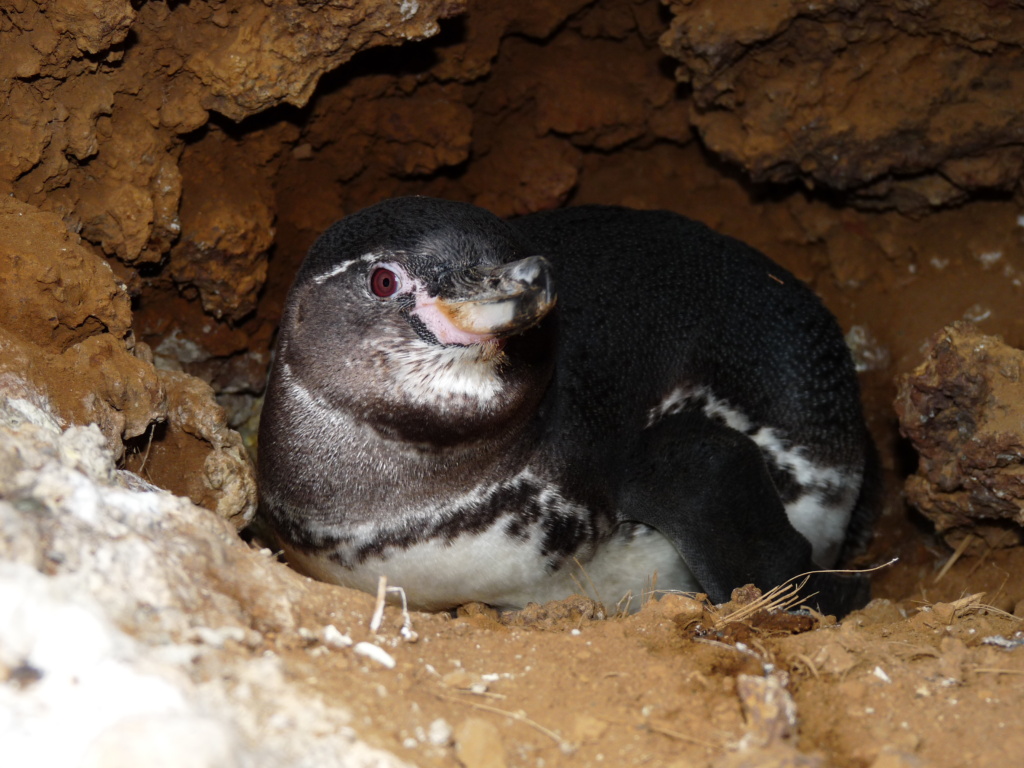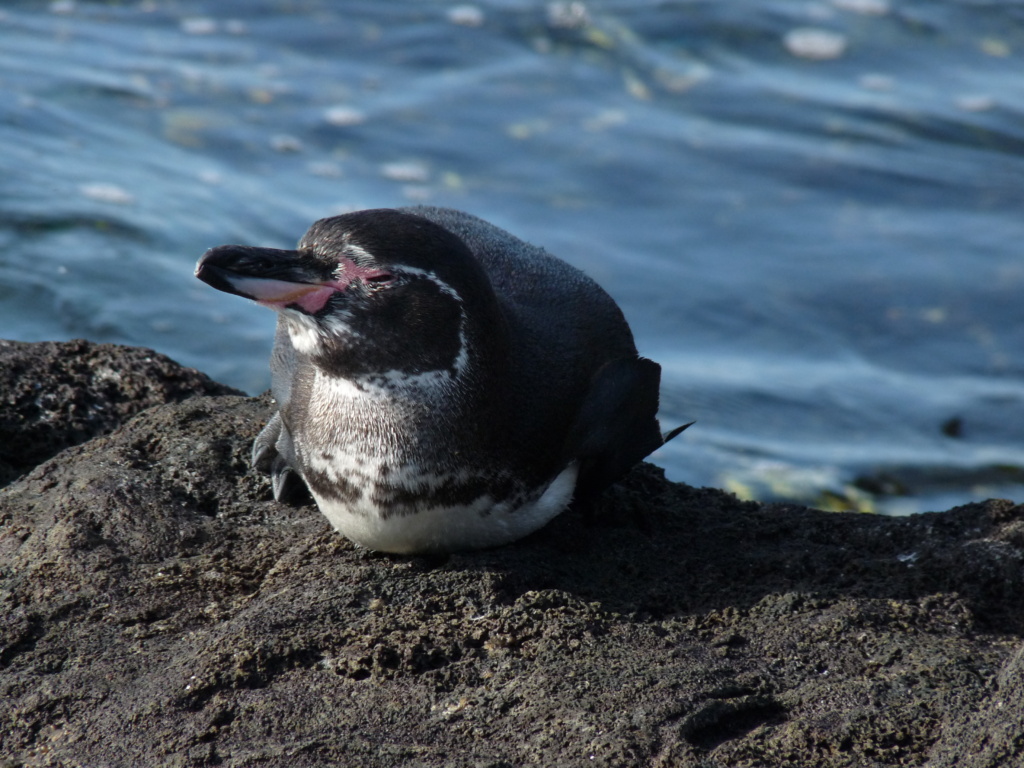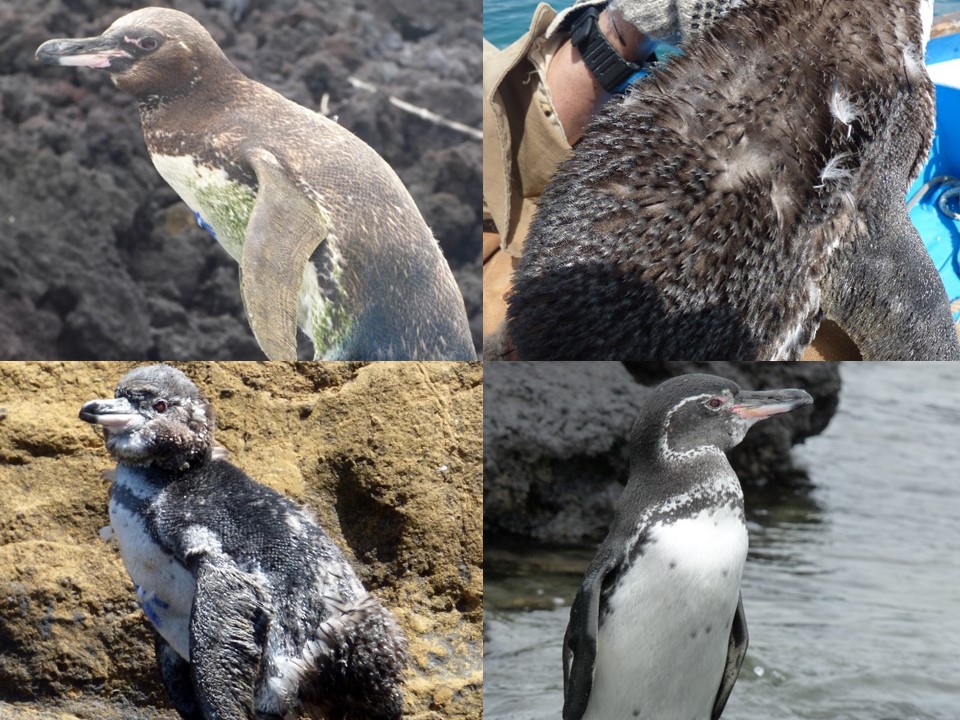Galápagos Penguin Biology
Galápagos Penguin Project | Galápagos Penguin Biology | Study Site | Miti & Flecha
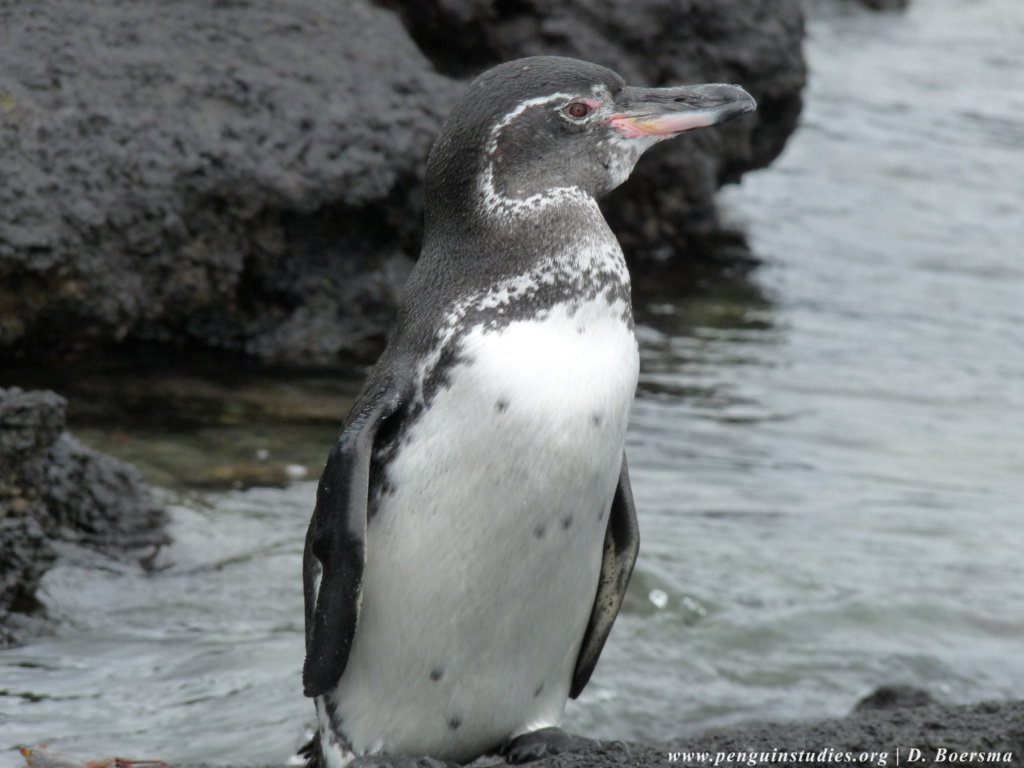
Species Name: Spheniscus mendiculus
IUCN Status: Endangered
According to the IUCN SSC Penguin Specialist Group, the species has been in rapid decline since the early 1970s. Small population size, restricted range, increased frequency of El Niño events, decreased frequency of La Niña events, and introduced predators contribute to the decline in population.
Where are they found?

The Galápagos penguin is the most northerly species and the only penguin species that occurs above the equator. That means they never experience cold weather and are more concerned with overheating than with freezing. Most Galápagos penguins breed south of the Equator on Bartolomé, Fernandina, and Floreana islands, but their breeding grounds straddle the Equator on Isabela Island.
Galápagos penguins primarily consume nearshore, schooling fish and often feed within 5 m of shore. They eat small fish, crustaceans, and cephalopods, and have trouble swallowing big prey. Penguins are visual predators that often forage during the day. Usually, dives for food are short (less than 1 minute) and shallow (less than 6 meters).
Galápagos penguins forage alone or in small groups but often feed with other seabirds like pelicans, boobies, noddies, and with predatory fish like tuna and sierra mackerel.
What do they look like?
The Galápagos penguin is the smallest of the Spheniscus penguins. Males are generally slightly larger than females with deeper bills. Galápagos penguins have a unique white chin that is more pronounced in males than females. Chicks hatch covered in downy feathers. The down continues to grow until the juvenile, waterproof plumage pushes out the down. The chicks wait until they have enough juvenile plumage to leave the nest and forage at sea. Juveniles lack the white feathers on both sides of the head that outline the cheeks and the dark feather band that stretches from the breast to the legs. Like the adult, the juvenile has individually distinct dark feather spots on the breast.
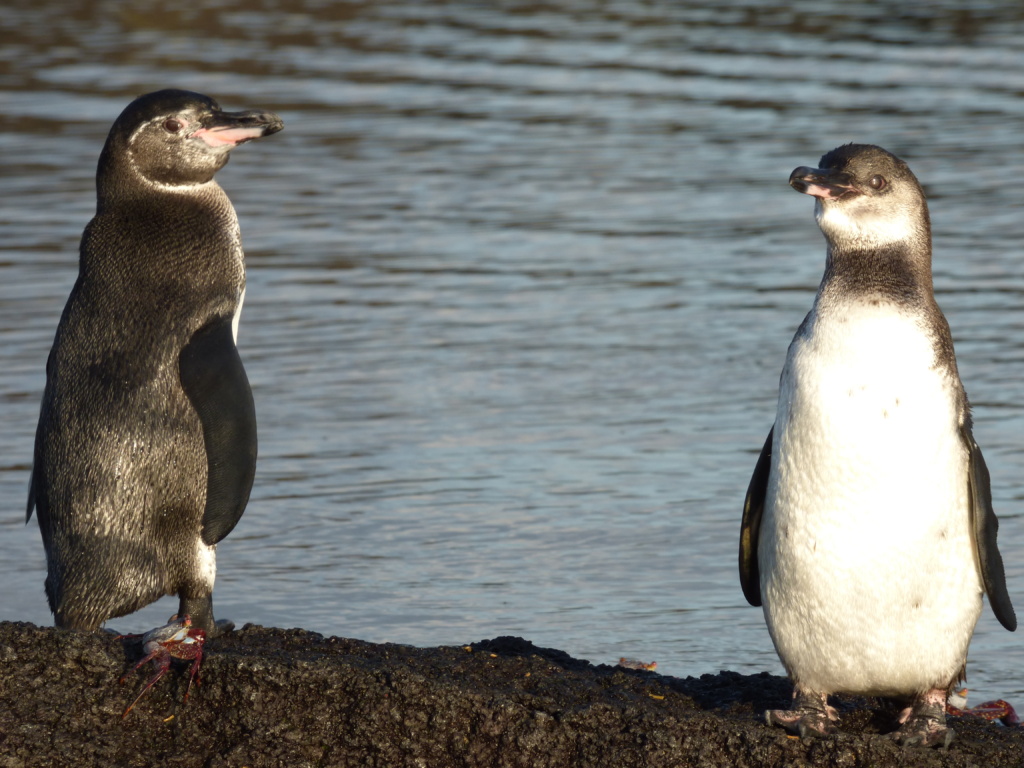
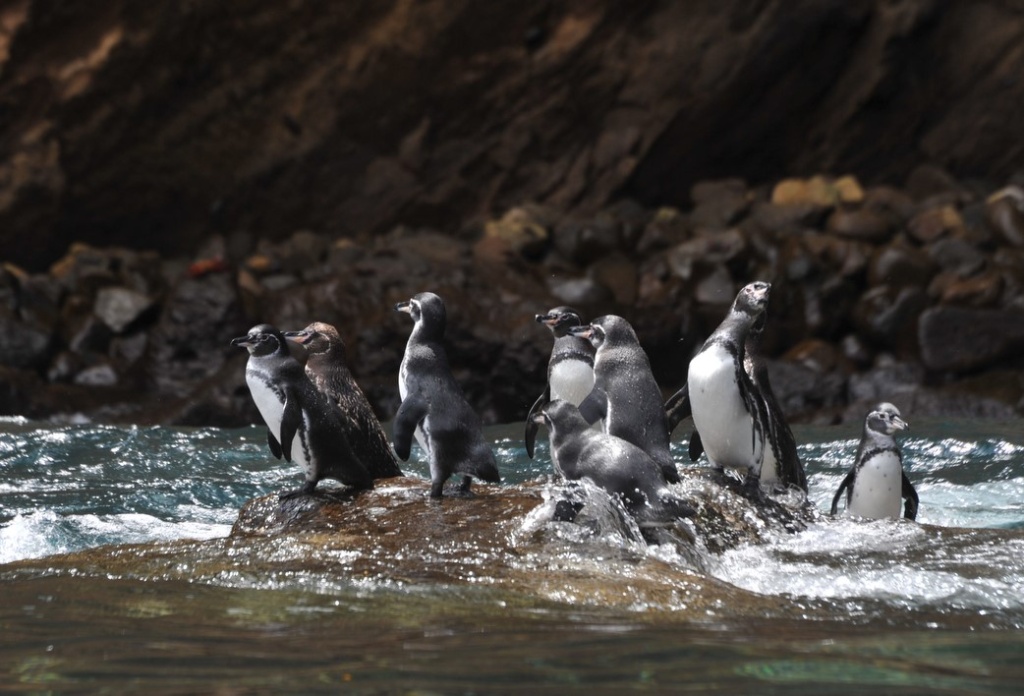
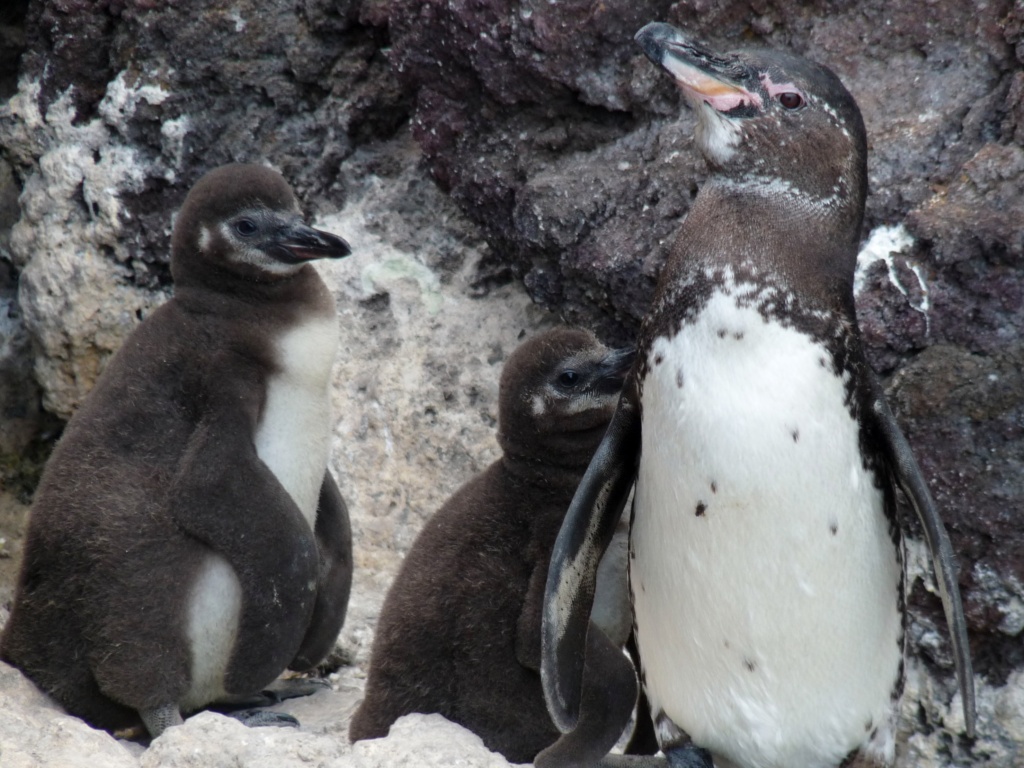
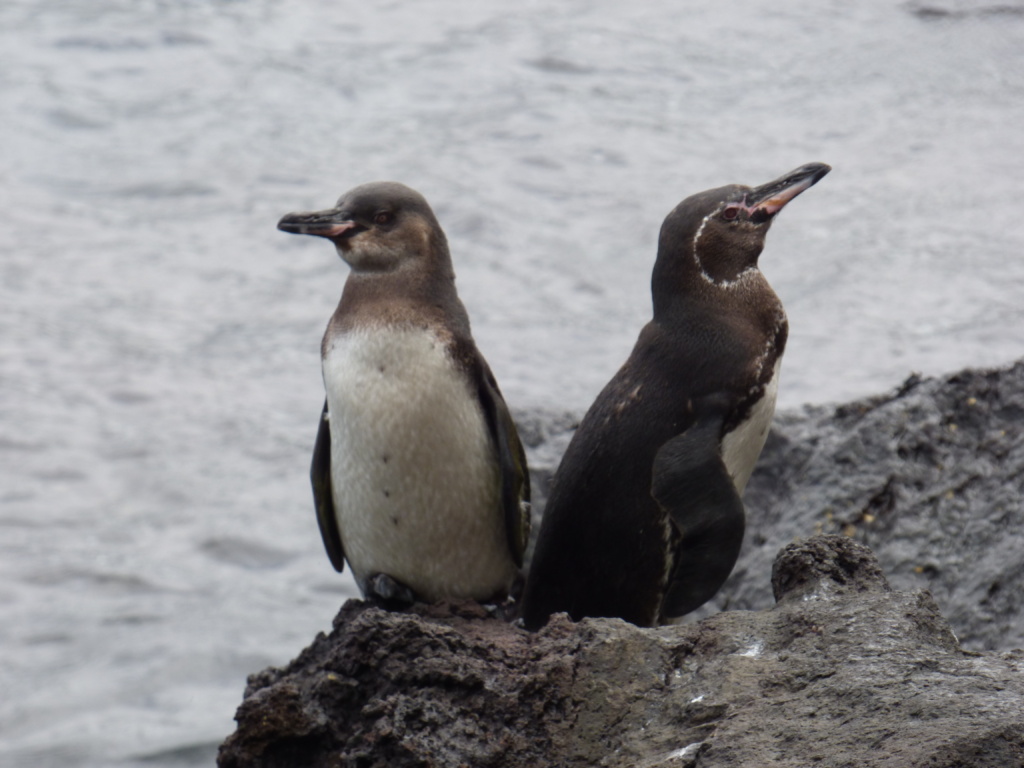
Breeding Biology and Molt
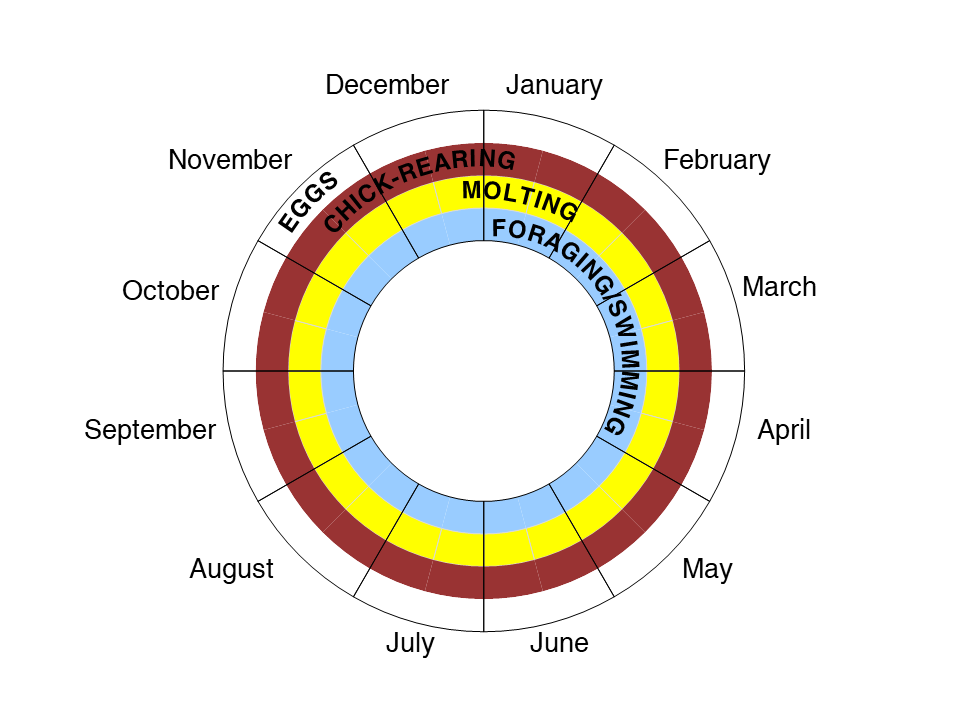
Unlike other penguin species, there is no set breeding season for Galápagos penguins. Eggs, chicks, and molting Galápagos penguins can be found year round. When food is abundant, they can raise two chicks within three months. The female typically lays two eggs and chicks hatch after ~40 days.
Galápagos penguins normally molt twice per year, but all other penguin species molt once per year. Living near the Equator takes a toll on Galápagos penguin feathers, making them brittle. Molting twice per year keeps feathers in prime condition — but it is costly. It is not predictable when food will be available in the Galápagos. So unlike penguins in more seasonal environments, Galápagos penguins molt before breeding, taking care of themselves before raising young. When food becomes scarce, penguins will desert their eggs or chicks to survive.
